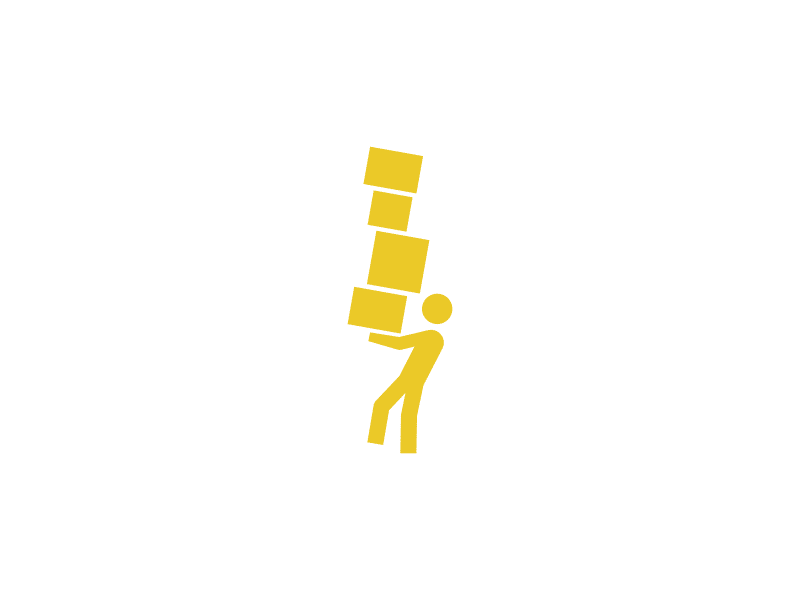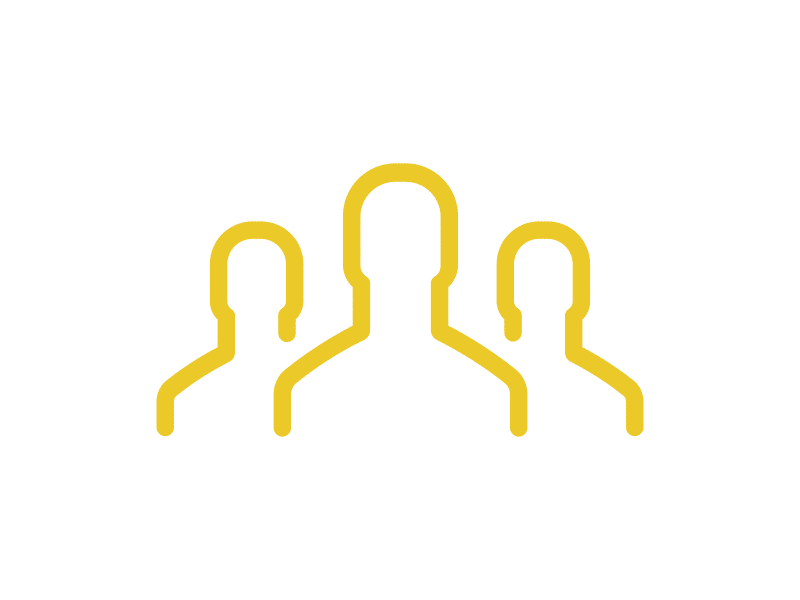Though without sounding too much like a grinch, this well-intentioned oversight can have devastating ramifications for your business and team dynamics, especially if you’re a tech company. Without having an honest conversation with your team members about your collective and individual mistakes and failures, it’s much more challenging to set realistic and accountable milestones for the year to come.
This Christmas at Artbees, we switched up the style of our annual meeting during which we historically had written up resolutions for the new year and instead sat down for a frank discussion of what went wrong. Within a matter of hours we were able to easily detect some major mistakes and oversights that had been made. Our findings will perhaps surprise you as they do not reflect the typical pitfalls companies generally experience and talk about. While some of them may not be labeled as tech company mistakes, I believe many of them already have or will become a problem for your tech company sooner or later:
1. Never Stop Recruiting.

Shaping a great team requires an aggressive recruiting plan and in order to keep this great dynamic alive you need to actively continue your talent acquisition strategy. A constantly flourishing company should be always open to new talents; there is no such thing as a well established team whatsoever. In reality, you’ll often find that your team members fall within two separate categories. Key people and those who are struggling. You probably don’t need to worry about the first group since they’re generally a versatile and resilient crowd. The second squad, though, can be a bit touch and go.
2. No Exceptions
Here’s another expensive recruitment lesson we’d like to share. Sure, during our hiring process we try to get to know someone as much as possible to guess whether or not they would not only be qualified for the job, but also fit into our existing team culture. At the point when you’re hiring a person though, you can only hope that you were right. So fast forward—you hire them, get to know them and hope that they can adjust themselves in the company’s culture. But what if they can’t. Well at that point, we’ve invested a lot of time in that person and she’s already taken over some key responsibilities and, sure, she’s doing fine though she simply can’t fit into our dynamic naturally. At this point you may consider that we all have our differences and it’ll probably be okay just to accept it and move on, right? Wrong.
Of course every team is made up of different individuals, each with their own tendencies and quirks and, in fact, it’s much healthier to have different backgrounds, opinions, and ideas to foster progress. At the same time though, when working in a collaborative environment aiming for one unique objective, we found out how problematic it could be to have these incongruities. We tried to customize our workflow and even our culture for this problematic team member.
For example, in one specific case, a new colleague of ours was not a particularly communicative person so we said to ourselves that although she wasn’t so talkative and willing to collaborate she would probably still get the job done on time. Though during this trial with her, we recognized immediately how important consistent communication was in order to ensure that the final result matched the expectations and on-going work of the whole team. Even though the deadlines were met, the product was not reflecting the collaborative nature of our work.
We made a mistake by compromising our team on behalf of the incompatible personality of another team member. Instead of addressing and eliminating obstacles facing the team, we all shifted our efforts toward adapting to one specific individual, putting an overall strain on each of us. Particularly if you have an adaptive and social team culture, it may be in your nature to accommodate a conflicting personality, though eventually this will be at the expense of your ability to make meaningful progress as a team.
3. Say “No” to Brilliant Creeps.
Everyone wants to hire talented people. Once you find someone whose resume is seemingly brilliant you barely notice other factors and this is what we call blind hiring. The problem is that sometimes a person doesn’t come with the whole package and lacks vital traits and skills that can’t necessarily be outlined on a C.V. There are other critical requirements that you have on your agenda which almost always immediately fade away once a person flashes a few brand university or company names and is deemed as book smart. It may sound obvious, though factors such as attitude, communicative skills and interpersonal capabilities are just as important as technical skills.
Remember, you’re hiring an individual who needs to be able to contribute to the company’s collaborative environment so next time you have a prospective hire coming in for an interview, remember to read between the lines of their resume and ask the questions that count. Becoming familiar with their interpersonal skills can be as easy as asking about previous disagreements they’ve had with past colleagues and in which manner they chose to dealt with them.
4. Never Go Big. Go Small, But at a Constant Pace.
If you’re coming from a software company then you probably know what I’m talking about. You may come across a mysterious major software update and sure, it might look sexy at first, giving you that rush you may get from taking big unpredictable risks, but as you can guess it’s usually a huge gamble. With one major update, you could lose all of your customers or, if you are lucky, hit the jackpot and fix your bugs for ever.
Fortunately ours was not a flop, but the time spent on these types of major releases and the ultimate result showed us that we still made a big mistake on betting all we had at once. Instead of making a huge update and waiting to see how it would look in the end, we should have simply released small updates that would gradually lead to the end result. In this manner, we could be absolutely sure of how the final product would be.
5. Testing Starts Before Creation, Not After It.
The first time I read this article by Atlassian, I remember being a bit taken aback by the premise that one should begin testing out a product before it’s even done. How in the world could you test something that wasn’t even created yet? At that time, we used to work like many other companies in a linear fashion. We created a product and then started to check for problems and eliminate them. Sounds logical to me too but not when you are seeing it from a developer’s point of view.
At Artbees, we always left testing to the QA team. Once the developer team delivered a new piece of code to the QA team, they usually went back to developers with a bug report and then after several iterations between the developer and tester we could count on an “almost” bug free code. Sometimes, though, it got even worse. Repeated iterations can, in some cases, make the whole process actually quite inefficient eventually resulting in some bugs being neglected or unseen within the back and forth exchange. So we put an end to this. Recently we switched to a new model where our developers write their automated testings before starting the code and this has, thus far, significantly reduced the interactions between testers and developers.
6. Take PR Seriously.
Some people claim that PR is the main reason for their product’s success or failure. We are not about to debate this though last year we actually saw how a good relationship with the public can determine the course of our product. Having a well-shaped product and a good support team is, of course, another factor which helps a team succeed but when it comes to selling your service or product, it’s also about how you talk to your customers. This is usually neglected by small development teams where the product owners are also among the creators of the product. Naturally then, when it comes to things like public relations or marketing strategies they tend to be less effective.
We have been selling actual products for almost four years now and yet it has only been one year that we are running strategic A-B testings or trying to shape our PR scheme. We started off with our own web portal to open a new gateway to communicate with our clients more effectively and constantly. Thereafter we launched our newsletter campaign and at the end we were able to reinforce our social presence with some cool techniques. In response, we witnessed a remarkable change in our sales and customer loyalty. Excluding external advertising expenses it only takes your manpower and a bit of enthusiasm to get started. And boy oh boy, if you would have known how important it ended up being for us, you might start doing it yourself today.
7. Throw Your Ego Away.
Yes the title may sound a bit harsh, but let’s deal with it. Your ego is necessary to keep you going and expand further, but it also can act as an obstacle to progress. One simple example is ego-driven decision making. Let’s say you’re the manager of X team and you are known for being the driving force behind the team’s success. Now you are at the edge of making an important decision and there is somebody in the team who disagrees with your plan. What would you do? Would you follow your instinct or listen to your team member?
The answer to this question isn’t black and white, but there are some simple considerations to help you make a relatively better decision. First: Never trust your ego! It is nearly always wrong. If you hear this voice in your head that keeps rerunning this tape of your past victories, reaffirming that then in this case you must also be right, please press pause just for a moment. Second: Evaluate your colleague’s reasoning and perspective. She could have developed this idea in a totally different context which hadn’t even occurred to you in the first place. Generally, it is good to follow your guts once in a while but not when you sense someone is making a point that actually makes sense.
8. Avoid Big Goals. Make Tiny Decisions.
A long term goal is easy to make but hard to execute or even change. Once you set a big goal you’ll need to invest a lot of resources to kick it off. While continue making progress, you might be inclined to convince yourself whatever you are doing is right. You’ll start to ignore warnings and brush off any objections. This attitude could potentially threaten the destiny of your company or product or just simply put you on track to merely dealing with less important issues and projects.
Making short-term goals though, is a more effective way to keep you on track, giving you a proper unit to measure the progress you’re making. So instead of making big goals try to designate smaller milestones for each of your projects. Give yourself a target that is achievable in a reasonable amount of time or, in other words, be as realistic as possible and try not to amuse yourself with impractical expectations. Your job as a manager or leader is to make effective and dynamic decisions throughout the journey. You need to adapt to new situations and reshape your vision quickly to avoid less damages or use unseen opportunities. In order to do this you need to fluently make tiny yet effective decisions.
9. Time Is Gold. Don’t Waste It in Meetings.
Let’s be clear: Meetings are basically nothing but productivity killers. Assume you’re running a meeting which includes four people from different departments for two hours. That’s almost eight hours of productive time invested in this meeting. That on top of the fact that it usually takes time for people to refocus getting back to work after the meeting. There is no way that this meeting is worth of valuable eight hours, and here’s why:
- There’s always at least one person on the team who shows up unprepared which, in turn, ends up wasting time.
- Effective meetings require preparation from each participant so one person’s lack of foresight can, in turn, disrupt the entire point of gathering.
- People rarely stick to the agenda. Instead they easily slip through the related topics or issues and waste people’s time.
- The amount of valuable information exchanged is usually insignificant.
- They are boring… most of the time!
Here is what we did recently to ensure our meetings were more productive:
- A good practice is to run meetings only when needed. Avoid scheduled meetings as much as possible.
- Avoid titles and procedures and invite only the few most important people who are related to the topic.
- Always set a timer and try to stick with it. For the first few sessions you’ll be running out of time, but eventually you’ll learn to avoid getting off track and stay focused.
- Have a very clear agenda.
- Make it as short as possible.
- Practice holding friendly meetups at the side of the problem like working desks or in front of whiteboards instead of conference rooms. This will force everyone to stay focused and actively engaged and, of course, it’s less boring.
10. Put Everyone on the Front Line.
For a long time we would divide our people in two groups. Those who were needed in the kitchen and those who could deal with the public. We did this without realizing that even the greatest chefs can lose sight of what their customers actually want if they never get first-hand reviews. Product creators, managers and marketers alike need to tune into the product’s strengths and weaknesses. By hearing direct customer feedback, they’ll learn firsthand what their actions have on the user experience.
Recently, we changed this on-stage, back-stage routine though. It started with a new developer who just joined our team. Although she was enthusiastically trying to be as useful as possible, she had never been exposed to the outside world. It took her, and our team, two hours of server down time to learn our lesson. Our whole network suffered simply because someone in the company with technical expertise but no on-the-ground experience was trying to improve the systems with some new unproven experiments.
Immediately after this incident we had her work in customer support section to deal with some questions and issues which gave her much more insight. She is now the one reminding the rest of the team about taking precautions before any deployments are made. My point is, a developer who’s isolated in an experimental development lab can lead to an unhealthy workflow. Just avoid it.
Credits
- Orbital Sciences Antares Launch
Emblematic of a catastrophic debacle, the header image captures moments after the Orbital Sciences Corporation Antares rocket exploded in October of 2014, consequently destroying 5,000 lbs. of experiments, hardware, crew provisions, and rocket supplies. (Photo Credit: NASA/Joel Kowsky) - Recruitment by Gerald Wildmoser from the Noun Project
- Chosen by Gilbert Bages from the Noun Project
- I’m Fabulous
- Line Chart by iconsmind.com from the Noun Project
- Bacteria by Egorova Valentina from the Noun Project
- Advertising by Seb Cornelius from the Noun Project
- Self-esteem by Ariel Ha from the Noun Project
- Heavy Load by Juan Pablo Bravo from the Noun Project
- Meeting by Christian Wad from the Noun Project
- people by Gregor Črešnar from the Noun Project












4 Comments
I really enjoyed reading this article. We actually encountered a few similar situations ourselves and learned a lot from them this past year.
Keep up the good work, Artbees team!
Thanks. I hope we won’t make the same mistake again!
I liked the fact you admitted mistakes and valued that experience. Really curious about how you implement “Testing before creating”… I have only the best words about themes you create, attention to users, and thank you for sharing your experience on blog!
Thanks! We started by writing test cases and logics before developing actual code. You can read more here: https://www.atlassian.com/agile/testing